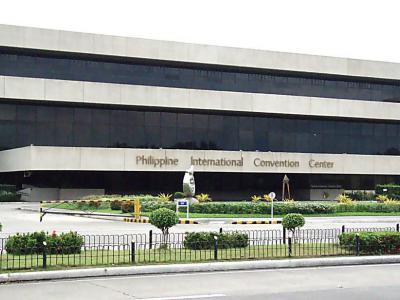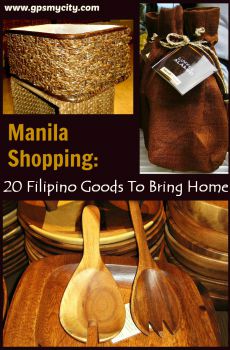Philippine International Convention Center, Manila
Located in Pasay City, the metropolitan area of Manila, the Philippine International Convention Center (PICC) is a place for people and nations to meet and exchange ideas. Built in a record time of 23 months between 1974 and 1976, the PICC has hosted various conventions both, local and international ones, meetings and social events. The PICC officially opened to the world by hosting the IMF-World Bank Meeting in 1976. In addition, the Plenary Hall at the PICC annually hosts the prestigious Awards Night for the Filipino Academy of Movie Arts and Sciences (FAMAS).
Designed by Leandro Locsin, the PICC complex was built on reclaimed land along the Manila Bay and became Asia’s first international convention center. Locsn, further, went on to become a National Artist in Architecture in the Philippines. With a carpet area of over 70,000 square meters and five building modules, spaces in the PICC can be modified to hold various events such as private parties, political conferences, exhibitions and even concerts in appropriate settings. With its state-of-the-art facilities, the PICC serves and an excellent destination for people from all over the world to meet and share ideas and work towards a brighter future.
Other than hosting events, the PICC has also been an important part of Philippine history, Between 1976 to 1978, it housed the Batasang Bayan or the Legislative Advisory Council and the office of the Vice President of the Philippines until 2005.
Designed by Leandro Locsin, the PICC complex was built on reclaimed land along the Manila Bay and became Asia’s first international convention center. Locsn, further, went on to become a National Artist in Architecture in the Philippines. With a carpet area of over 70,000 square meters and five building modules, spaces in the PICC can be modified to hold various events such as private parties, political conferences, exhibitions and even concerts in appropriate settings. With its state-of-the-art facilities, the PICC serves and an excellent destination for people from all over the world to meet and share ideas and work towards a brighter future.
Other than hosting events, the PICC has also been an important part of Philippine history, Between 1976 to 1978, it housed the Batasang Bayan or the Legislative Advisory Council and the office of the Vice President of the Philippines until 2005.
Want to visit this sight? Check out these Self-Guided Walking Tours in Manila. Alternatively, you can download the mobile app "GPSmyCity: Walks in 1K+ Cities" from Apple App Store or Google Play Store. The app turns your mobile device to a personal tour guide and it works offline, so no data plan is needed when traveling abroad.
Philippine International Convention Center on Map
Sight Name: Philippine International Convention Center
Sight Location: Manila, Philippines (See walking tours in Manila)
Sight Type: Attraction/Landmark
Sight Location: Manila, Philippines (See walking tours in Manila)
Sight Type: Attraction/Landmark
Walking Tours in Manila, Philippines
Create Your Own Walk in Manila
Creating your own self-guided walk in Manila is easy and fun. Choose the city attractions that you want to see and a walk route map will be created just for you. You can even set your hotel as the start point of the walk.
Historical Churches Walking Tour
International surveys have repeatedly ranked Filipinos among the world’s most religious people. The archipelago’s colonization and evangelization by the Spanish, started in 1565, has left Manila with many shrines and churches sprawled around its streets, despite the destructions by wars and natural disasters. Some of these old churches are especially attractive due to their delicate mixture of... view more
Tour Duration: 2 Hour(s)
Travel Distance: 3.9 Km or 2.4 Miles
Tour Duration: 2 Hour(s)
Travel Distance: 3.9 Km or 2.4 Miles
Traditional Markets
Traditional markets showcase a unique aspect of life in any city. The ones featured in this walk offer a glance into the authentic life and habits of Manila’s people and play a vital role in the Philippines' capital's economic and cultural landscape. Traditionally, local markets sell a broader range of products than regular shops can provide: from veggies and fruits to dried fish and... view more
Tour Duration: 1 Hour(s)
Travel Distance: 3.0 Km or 1.9 Miles
Tour Duration: 1 Hour(s)
Travel Distance: 3.0 Km or 1.9 Miles
Manila Introduction Walking Tour
The capital of the Philippines, Manila was officially founded in 1571 by Spanish conquistador Miguel López de Legazpi. However, an organized polity, called Maynila (meaning "where indigo is found" in Tagalog), existed on the site since as early as 1258.
The earliest human life in the area dates to 3000 BCE, but much of the existing constructions found around the city were created... view more
Tour Duration: 2 Hour(s)
Travel Distance: 2.3 Km or 1.4 Miles
The earliest human life in the area dates to 3000 BCE, but much of the existing constructions found around the city were created... view more
Tour Duration: 2 Hour(s)
Travel Distance: 2.3 Km or 1.4 Miles
Historical Buildings Walking Tour
Manila’s long history results from its situation as a natural port in a huge bay. With the Spanish conquest of the Philippines in the 16th century, it became united, along with Mexico City and Madrid, into the first truly globalised trade system. Intramuros, Manila’s old walled Spanish town, stood for 350 years before World War II came, and still houses many of the historic buildings.
For a... view more
Tour Duration: 1 Hour(s)
Travel Distance: 2.5 Km or 1.6 Miles
For a... view more
Tour Duration: 1 Hour(s)
Travel Distance: 2.5 Km or 1.6 Miles
Useful Travel Guides for Planning Your Trip
Manila Shopping: 20 Filipino Goods To Bring Home
An archipelago of 7,000+ islands, The Philippines is a diverse nation populated by different tribes, each having their own culture and traditions. In Manila, one can find a whole lot of things worth keeping as a Filipino memento; it just might take one a little while to figure out what's best...








